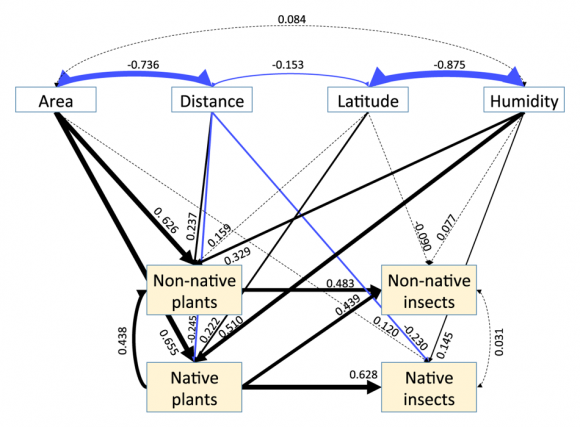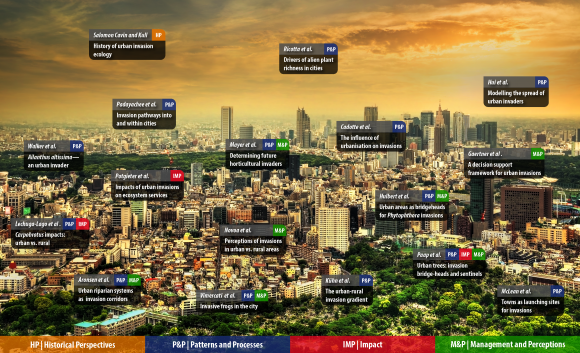14 April 2016 | By Dave Richardson

The insects are a group that has been underrepresented in the field of invasion biology, despite their impacts on agricultural production (e.g. fruit flies), ecosystem disruptions (e.g. ants) and vectors of disease that affect human health (e.g. mosquitoes). Further, much of the theory of invasion biology has come from work focused on plant and vertebrate invasions. To address some of the shortfalls, a C·I·B supported workshop on the “Drivers, mechanisms, impacts and adaptations of insect invasions” was held in November 2014. Around 40 delegates gathered in Stellenbosch to discuss insect invasions, share research results, and propose research directions for future collaborative work.
Following on from the workshop, a special issue in the journal Biological Invasions has now been published. The special issue is guest edited by former C·I·B postdoctoral fellow Matt Hill, together with C·I·B core-team members, Dave Richardson, John Terblanche and Susana Clusella-Trullas. The team has put together an editorial providing some background on the history and state of the field of insect invasions, and outlining the special issue.
The special issue sets a platform to advance the understanding of insect invasions, with 13 contributions spanning a range of topics such as taxonomic knowledge gaps, improving methods of detection of new invasions and assessing ecological impacts of new and existing invasions, as well as sources of novel invasive species. The special issue is structured around four main themes: (1) drivers of insect invasions including introduction pathways, dispersal and propagule pressure; (2) mechanisms of invasion including theories surrounding functional traits and life histories; (3) the impacts of insect invasions on agricultural production, human health and ecosystem functioning; (4) and where adaptations facilitating successful invasion and range expansion are likely to occur during the invasion process.
The collection of articles from a diverse group of national and international scientists working across different aspects of entomological and biological invasions highlights what makes insect invasions unique and where future research efforts should be focused.
The special issue is available as the April 2016 vol 18 of Biological Invasions
Articles in the Special Issue
- Editorial: Drivers, impacts, mechanisms and adaptation in insect invasions
- Global compositional variation among native and non-native regional insect assemblages emphasizes the importance of pathways
- Temporal and interspecific variation in rates of spread for insect species invading Europe during the last 200 years
- Increasing numbers and intercontinental spread of invasive insects on eucalypts
- Complex patterns of global spread in invasive insects: eco-evolutionary and management consequences
- Exotic biological control agents: A solution or contribution to arthropod invasions?
- Defining invasiveness and invasibility in ecological networks
- How propagule size and environmental suitability jointly determine establishment success: a test using dung beetle introductions
- The harlequin ladybird, Harmonia axyridis: global perspectives on invasion history and ecology
- Novel and co-evolved associations between insects and microorganisms as drivers of forest pestilence
- Methods and approaches for the management of arthropod border incursions
- Intentionally introduced terrestrial invertebrates: patterns, risks, and options for management
- Drosophila as models to understand the adaptive process during invasion
- Predicted decrease in global climate suitability masks regional complexity of invasive fruit fly species response to climate change
Related media coverage http://www.springer.com/us/about-springer/media/springer-select/harlequin-ladybirds-are-conquering-the-world-at-great-speed/9974304


